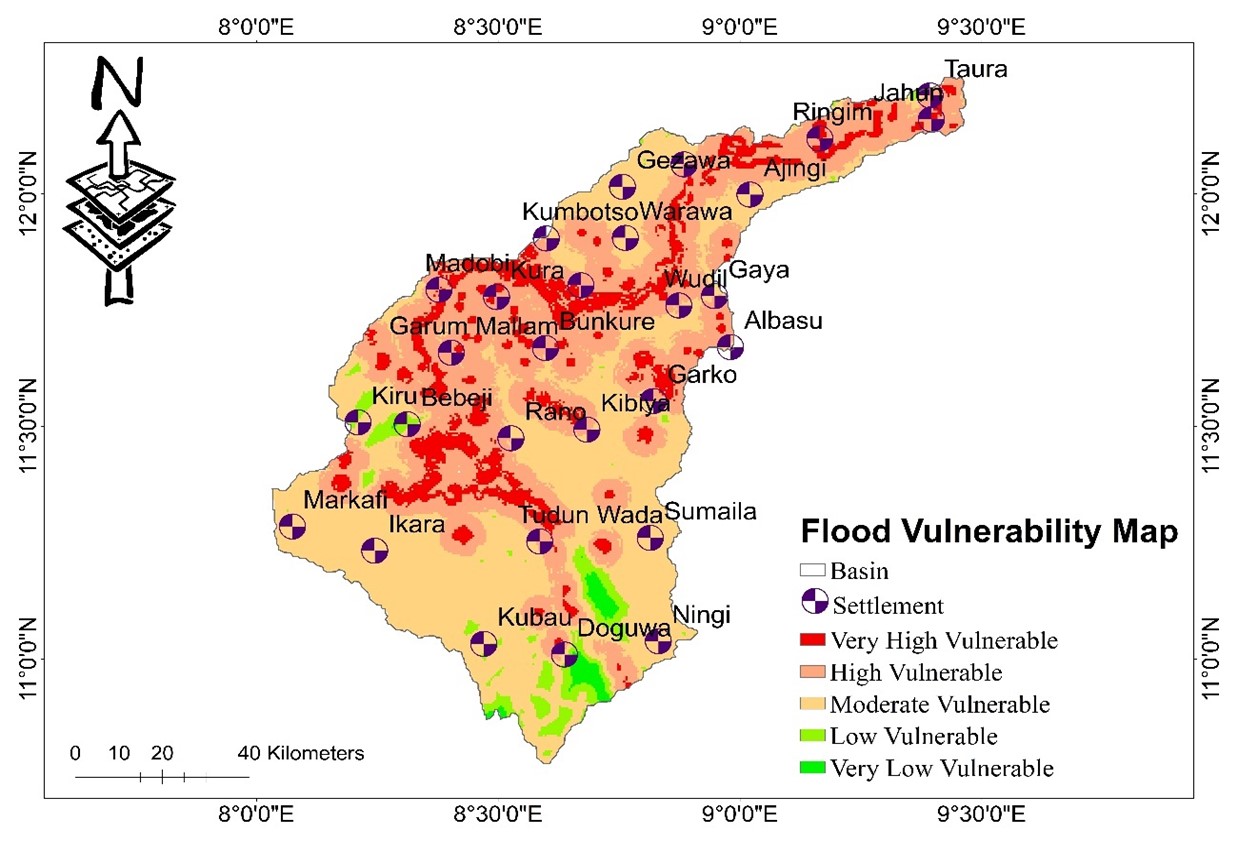ASSESSING FLOOD RISK AND COMMUNITY VULNERABILITY TO A HYPOTHETICAL TIGA DAM FAILURE ON THE KANO RIVER, NIGERIA
Keywords:
Flood risk, vulnerability assessment, Tiga Dam, hydrological modeling, GISAbstract
Flooding remains one of the most destructive natural disasters, particularly for communities located downstream of large dams. A dam failure can lead to severe socio-economic and environmental impacts, especially in regions with weak flood preparedness. This study evaluates the flood risk and vulnerability of downstream communities along the Kano River under a hypothetical failure of the Tiga Dam, using hydrological modeling, geospatial analysis, and socio-economic assessments. The Hydrologic Engineering Center’s River Analysis System (HEC-RAS) was applied to simulate flood extent, depth, and velocity, while Geographic Information Systems (GIS) combined with Multi-Criteria Decision Analysis (MCDA) integrated topographic, land use, and socio-economic factors to assess vulnerability. Simulation results show that floodwaters could reach depths of up to 21.89 meters, posing catastrophic risks to low-lying, densely populated areas. Vulnerability analysis reveals that poverty, inadequate infrastructure, and environmental degradation significantly increase flood susceptibility. The study emphasizes the urgent need for enhanced flood management policies, strategic land-use planning, afforestation of floodplains, and the development of effective early warning systems. Additionally, strengthening community-based disaster preparedness and reinforcing critical infrastructure are essential to mitigating the potential impacts of dam failure. These findings provide actionable insights for policymakers, engineers, and disaster risk managers in designing proactive flood risk reduction strategies for the region.

Published
How to Cite
Issue
Section
Copyright (c) 2025 Abdullahi Balarabe, Ibrahim Mukhtar, Abdulrazak Ahmed, Abdulhakim Wagini Hassan, Jibril Haruna Umar, Suleiman Adoga Salihu, Olorunshola Sherifat Aliyu, Y. Haliru, Usama Salisu Khalid, M. H. Aliyu

This work is licensed under a Creative Commons Attribution 4.0 International License.
How to Cite
Most read articles by the same author(s)
- Abdullahi Balarabe, E. O. Iguisi, Ibrahim Mukhtar, Z. R. Lawal, Abdulrazak Ahmed, Jibril Haruna Umar, Suleiman Adoga Salihu, Abdulhakim Wagini Hassan, Y. Haliru, M. H. Aliyu, Usama Salisu Khalid, IMPACT OF LAND USE AND LAND COVER (LULC) CHANGES ON FLOOD RISK IN THE DOWNSTREAM COMMUNITIES OF THE TIGA DAM, KANO RIVER, NIGERIA , FUDMA JOURNAL OF SCIENCES: Vol. 9 No. 11 (2025): FUDMA Journal of Sciences - Vol. 9 No. 11




